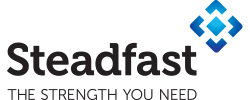Understanding your Sums Insured is essential.
‘Sums Insured’ may seem a confusing term. However, we’ll explain why they are essential and make it easy to understand. After all, the ‘Sums Insured’ can be the difference between having the appropriate insurance coverage and being underinsured.
Imagine for a moment that your warehouse is burning to the ground. After a quick check of your insurance policy, you realise you have insurance coverage for $500,000 (as stated in your ‘Sums Insured’). However, you now know that it’s going to cost $1,000,000 to replace the building and contents. Therefore, you now have a $500,000 shortfall. This shortfall is the amount you will have to pay, known as ‘underinsurance’.
That’s why ensuring that your ‘Sums Insured’ are accurate and stay accurate is crucial.

Firefighters extinguishing an industrial site fighting with fire concept, Generative AI
What does ‘Sums Insured’ mean?
‘Sums Insured’ is the maximum amount of money your insurance provider is willing to pay on a claim for your business. It includes payouts for your buildings and their contents, equipment and other business-related assets as set out in your policy.
Whatever policies you have for your business, each policy sets out the maximum amount of money the Insurer will pay for each loss, called the ‘Sums Insured’. Therefore, you must accurately assess the replacement value of the buildings and other assets you want to insure. Using your best guess for Sums Insured may leave your business underinsured.
Ensure that your Sums Insured are always accurate.
The best way to ensure that your Sums Insured are appropriate is to value your business assets regularly. Professional valuations provide accurate information that you can use to make relevant changes to your policies.

The Co-insurance Clause
If you fail to keep your Sums Insured up to date, the co-insurance clause may activate, making matters worse.
The co-insurance clause comes into effect if you make a claim and the ‘Sums Insured’ is less than the ‘actual replacement value’.
The threshold for the Sums Insured varies depending on the policy and insurer. However, for most property insurance policies, the ‘Sums Insured’ must be at least 80% of the ‘actual replacement value’. If it’s below 80%, the insurer will only pay up to the percentage of your cover for partial loss claims.
For example, say the actual replacement value of your building is $1,000,000. Your ‘Sums Insured’ must be at least 80% of this value, so $800,000 or more. If your Sums Insured are only $500,000, you are in effect 50% underinsured.
Of course, the greater the ‘Sums Insured’ amount, the higher the premiums, which is why businesses are underinsured.

Making Insurance Claims
When you set ‘Sums Insured‘ below the recommended threshold, problems may arise when you make a claim.
For example, say the actual replacement cost for your building is $1,000,000, and your ‘Sums Insured’ is $500,000. Your ‘Sums Insured’ is only 50% of the Actual Replacement Value, which tells the Insurer you are self-insured for the remaining 50%.
If your Insurer decides to activate the co-insurance clause because your ‘Sums Insured’ are below their recommended threshold, they will only pay up to the % insured.
For example, say the roof of your building is damaged and requires replacement for $300,000. If your Sums Insured are only 50% of the Actual Replacement Value, the insurer will only pay 50% of the repair costs for the roof.
What can you do?
We recommend seeking professional insurance replacement valuations for your property and assets at least every three years.
Why? It gives you an accurate idea of replacement costs that differ from the current market value to meet the minimum threshold for Sums Insured. There may be the option to cover buildings and assets for an Agreed Value, provided you meet specific requirements.
An insurance adviser can guide you through your risk exposure and highlight where you may be underinsured. They can work with you to organise replacement valuations to help you set accurate ‘Sums Insured’.
These are merely a couple of ways an insurance adviser can use their risk and insurance expertise to help protect your business’ success.
To review your business risks and insurance needs, contact Clear Insurance today.
General Advice Warning: This advice is genehttps://advisr.com.au/lisa-carterral and does not take into account your objectives, financial situation or needs. You should consider whether the advice is appropriate for you and your personal circumstances. Before you make any decision about whether to acquire a certain product, you should obtain and read the relevant product disclosure statement.
Clear Insurance Pty Ltd. ABN 41 601 916 689. AFSL No. 548953.





